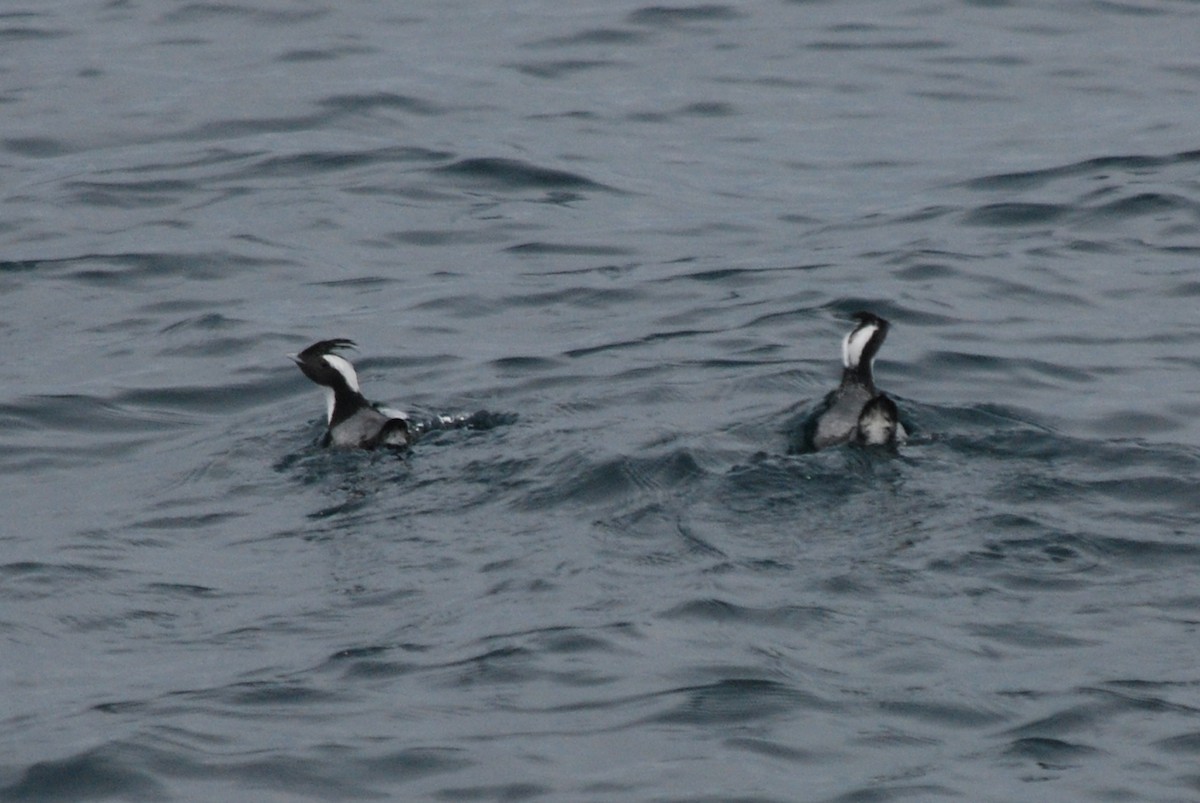Japanese Murrelet
A species of Ancient and Southern Murrelets Scientific name : Synthliboramphus wumizusume Genus : Ancient and Southern Murrelets
Japanese Murrelet, A species of Ancient and Southern Murrelets
Botanical name: Synthliboramphus wumizusume
Genus: Ancient and Southern Murrelets
Content
Description General Info
 Photo By Nigel Voaden
Photo By Nigel Voaden Description
The Japanese murrelet or crested murrelet (Synthliboramphus wumizusume) is a small bird that inhabits rocky islets and reefs in the warm waters of Japan and southern Korea. Its non breeding range includes Hokkaido and southern parts of Primorye and Sakhalin. It has black and bluish grey upper body and white underparts plumage. Breeding sites are crevices, burrows and hollows in rocks, the gaps in piles of stones, and among grasses on uninhabited islands. The northern limit of the breeding sites are the Nanatsujima Islands of Japan, while the most important breeding sites are Biro Island and the Izu Islands. The Japanese murrelet lays eggs in March. Clutch size is slightly less than two eggs. Incubation duty was shared almost equally by both parents. The chicks are not fed in the nest, but leave the nest one to two nights after hatching. In 1975, this species was designated a natural treasure by Japanese government. Habitat disturbance due to increasing sport fishing activities, predation by crows, large gulls and rats among others, gives the Japanese murrelet its Vulnerable status on IUCN Red List of Threatened Species. It is listed on Appendix I of CITES and legally protected in Japan. 
Size
26 cm
Nest Placement
Cavity
Feeding Habits
Japanese Murrelet primarily consumes planktonic crustaceans, such as euphausiids, and small larval fish year-round. In summer, it favors crangonid shrimps, Pacific herring, Pacific saury, sandeels, smelt, and sculpin. Winter diet is largely unknown but is thought to include euphausiids. Japanese Murrelet usually feeds in small groups over the continental shelf, diving to depths similar to S. antiquus.
Habitat
Japanese Murrelet typically resides in boreo-cool subtropical waters of the northwest Pacific. The species breeds on small, rocky islets and coastal areas. It generally forages offshore, extending to the continental shelf edge, and also inshore in regions where currents create food-rich waters. In winter, japanese Murrelet stays predominantly in temperate and cool subtropical waters offshore.
Dite type
Piscivorous
General Info
Feeding Habits
Bird food type

 Photo By Nigel Voaden
Photo By Nigel Voaden